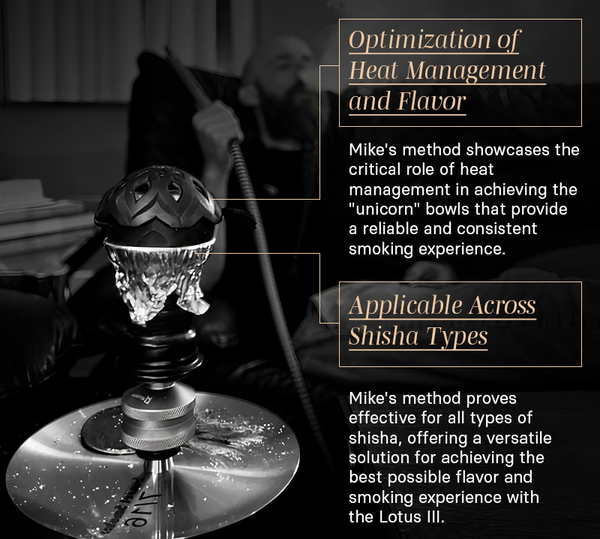
Case Study: Using the Kaloud Lotus III with Aluminum Foil (A Conversation with Mike Wolf (aka Dragonfly Mike)
Mike Wolf, a longstanding client of Kaloud since its inception and an influential figure in the hookah industry, embarked on a video endeavor aimed at dissecting the design intricacies of every Kaloud Lotus available in the market. However, the resulting video proved excessively lengthy, leading him to shelve the project. Nonetheless, this process granted him an in-depth understanding of each Lotus variant through meticulous examination.

Upon scrutinizing the Lotus III, Mike began drawing comparisons with the Lotus 1+, the second iteration of the original Lotus 1. Apart from the evident distinction in materials, with stainless steel replacing aluminum, two major disparities captured his attention: the airflow dynamics and the base structure of the Lotus III juxtaposed with the Lotus 1+.
While the differences in airflow are critical for the smoking performance of the Lotus III, it wasn't the primary catalyst for Mike's decision to experiment with pairing the Lotus III with foil. Rather, it was the design of the heating management device (HMD) bottom that intrigued him.
Compared to its predecessors, the Lotus III presented a notable departure. Its rim sat lower than the center, positioning the HMD above the tobacco and preventing it from penetrating the tobacco as the Lotus 1+ did. This initiated convection heating, drawing air through the tobacco to heat up the entire bowl. Unlike the Lotus 1+, the Lotus III didn't form a seal as it rested on the rim of the bowl, akin to the Provost.

This realization sparked an idea in Mike's mind. Foil, he posited, could trap heat, replicating the effect of the "Lotus 1+ seal" and preventing heat from escaping through the sides of the Lotus III and the bowl's rim. He could regulate airflow by adjusting the number of holes pierced in the foil.
Subsequently, Mike packed a simple red clay bowl with Musthave tobacco, foiled it, and pierced holes as he would without using an HMD, albeit focusing more holes on the rim of the bowl. Aligning the airflow holes on the Lotus III with the outer rim of holes in the foil, he placed three 25mm coals on top, covered it, and waited for 10 minutes.
At the ten-minute mark, the same duration required for the Lotus 1+, Mike took a puff, finding it unsatisfactory. Continuing to take puffs every minute, by the 14-minute mark, it smoked exactly like it would after 10 minutes with the Lotus 1+, albeit with an even more exquisite and pure flavor. The session evoked memories of his initial experience with an HMD (circa 2011, with the prototype Lotus 1), offering an exquisite, rich, and vibrant flavor unlike any other. The session lasted longer than any other with an HMD, averaging about an hour and a half per round of coals.
As Mike employed this method more frequently, his heat management improved. At times, he didn't need to ash or adjust the coals for 45 minutes. The bowl smoked perfectly without any intervention, and the flavor remained potent from the first puff to the last. He achieved more "unicorn" bowls with the Lotus III and foil method than with any other HMD he had tried, making his smoking sessions more reliable and consistent.
Mike attributed this success not only to the design of the Lotus III but also to the materials and their quantity. The Kaloud Lotus III boasted a significantly heavier build than any other HMD on the market, even the aluminum variant. Consequently, the Lotus III took longer to heat up due to the increased metal mass, but it also enhanced consistency by retaining heat. The gradual heat buildup promoted even heating, prevented heat spikes, and mitigated "tobacco shock." Coupled with the lid and handle, it functioned as a comprehensive self-contained heat system, surpassing the capabilities of an average HMD.

He emphasized that this method was applicable to any type of shisha available in the market, whether blonde leaf or dark leaf, ensuring the most flavorful experience. Though it required patience for the heat to build up, akin to allowing fine wine to breathe, it rewarded smokers with not just a great smoke but an unparalleled flavor and enjoyment experience.





